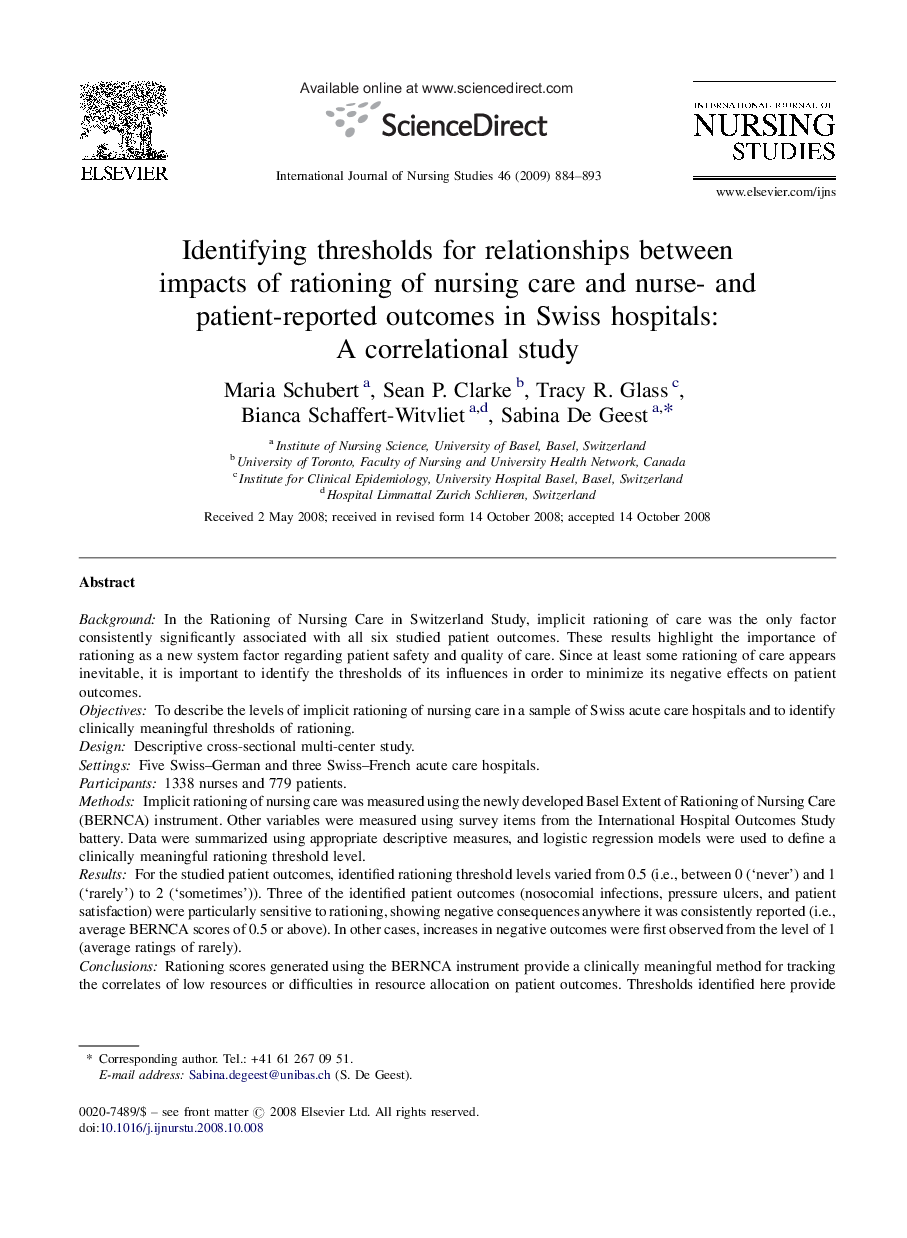| کد مقاله | کد نشریه | سال انتشار | مقاله انگلیسی | نسخه تمام متن |
|---|---|---|---|---|
| 1077097 | 1486594 | 2009 | 10 صفحه PDF | دانلود رایگان |

BackgroundIn the Rationing of Nursing Care in Switzerland Study, implicit rationing of care was the only factor consistently significantly associated with all six studied patient outcomes. These results highlight the importance of rationing as a new system factor regarding patient safety and quality of care. Since at least some rationing of care appears inevitable, it is important to identify the thresholds of its influences in order to minimize its negative effects on patient outcomes.ObjectivesTo describe the levels of implicit rationing of nursing care in a sample of Swiss acute care hospitals and to identify clinically meaningful thresholds of rationing.DesignDescriptive cross-sectional multi-center study.SettingsFive Swiss–German and three Swiss–French acute care hospitals.Participants1338 nurses and 779 patients.MethodsImplicit rationing of nursing care was measured using the newly developed Basel Extent of Rationing of Nursing Care (BERNCA) instrument. Other variables were measured using survey items from the International Hospital Outcomes Study battery. Data were summarized using appropriate descriptive measures, and logistic regression models were used to define a clinically meaningful rationing threshold level.ResultsFor the studied patient outcomes, identified rationing threshold levels varied from 0.5 (i.e., between 0 (‘never’) and 1 (‘rarely’) to 2 (‘sometimes’)). Three of the identified patient outcomes (nosocomial infections, pressure ulcers, and patient satisfaction) were particularly sensitive to rationing, showing negative consequences anywhere it was consistently reported (i.e., average BERNCA scores of 0.5 or above). In other cases, increases in negative outcomes were first observed from the level of 1 (average ratings of rarely).ConclusionsRationing scores generated using the BERNCA instrument provide a clinically meaningful method for tracking the correlates of low resources or difficulties in resource allocation on patient outcomes. Thresholds identified here provide parameters for administrators to respond to whenever rationing reports exceed the determined level of ‘0.5’ or ‘1’. Since even very low levels of rationing had negative consequences on three of the six studied outcomes, it is advisable to treat consistent evidence of any rationing as a significant threat to patient safety and quality of care.
Journal: International Journal of Nursing Studies - Volume 46, Issue 7, July 2009, Pages 884–893